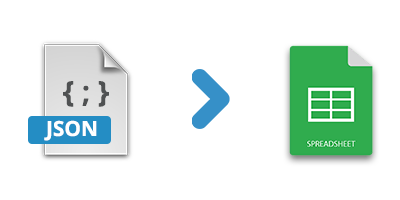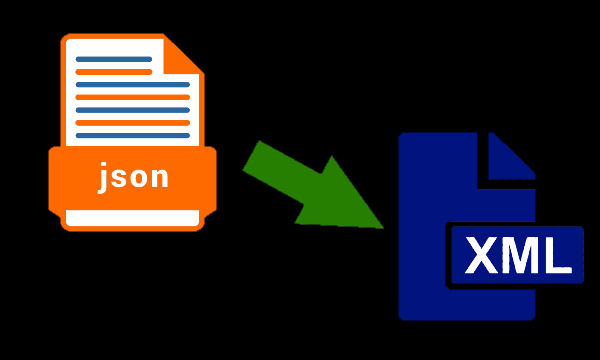How to Convert a JSON File to Microsoft Excel

JSON (JavaScript Object Notation) files are lightweight, text-based, and human-readable formats for data exchange. They are often used to transfer data from one computer system to another, such as from a server to an application or from a web service to a browser. To view and manipulate JSON files in Microsoft Excel, you need to convert them into a format which can be read by Excel. Fortunately, this is not too difficult and there are several options available. So we will tell you more about them.
Table of contents:
- What is a JSON File?
- How to Convert JSON File to Excel File Using Inbuilt Tool in MS Excel
- Best Third-Party Tools to Convert JSON File to Microsoft Excel File
- In conclusion
What is a JSON File?

A JSON file stands for JavaScript Object Notation and stores data in an organized manner that can be accessed by various programming languages.
The structure of a JSON file is similar to a key-value pair. Each record has one or more name/value pairs separated by commas that are stored as objects inside the file with curly brackets {} surrounding them. Each object contains its own set of values which can be nested within other objects if necessary.
JSON files are often used in web applications where the client side needs to interact with server side scripts, such as PHP or ASP.NET, to transfer data between browsers and servers. They are also popularly used for creating configuration files, storing data from web services and APIs, or transferring large amounts of structured data.
JSON files are an efficient way to store and transmit information between systems because they can be parsed quickly by computers. Moreover, their simple structure makes them easy to read and edit using any text editor.
How to Convert JSON File to Excel File Using Inbuilt Tool in MS Excel

MS Excel is a powerful spreadsheet application that can be used to store and present data in an organized way. It can also be used to convert data from one file format to another. For instance, you can easily convert a JSON file to Excel format using the built-in tool available in MS Excel. Converting a JSON file into an Excel spreadsheet can make it easier for users to analyze and manipulate the data contained within the file. This guide will walk you through how to do this using Microsoft Excel’s built-in tools.
- The first step is to open your JSON file in MS Excel. To do this, go to File > Open, then select your JSON file from the list of supported formats on the left side of the window. Once the file is open, you will see a preview of its contents in the main window.
- Next, click on “Data” on the top menu bar and select “From JSON”. This will open a new pop-up dialog box where you can specify some settings for your conversion process. In this case, make sure to check off “Convert to Table” and “Load to Worksheet” options before clicking “OK”.
- Excel will now take the data from your JSON file and convert it into an Excel spreadsheet that includes columns for each of the fields in your JSON document. The data will be organized by row, with each column representing a different field from your original JSON file.
- Once the conversion is complete, you can view the data in an organized table format. You can also edit and manipulate it using MS Excel’s powerful features. For example, you can quickly sort your data by different fields or create charts to visualize your results.
Now you know how to convert a JSON file into an Excel spreadsheet using Microsoft Excel’s built-in tools. Using this method allows users to easily analyze and manipulate the data contained within their JSON files with no need to manually parse the text themselves.
Best Third-Party Tools to Convert JSON File to Microsoft Excel File

If you have data stored in a JSON file that you need to get into a Microsoft Excel spreadsheet, there are a few different ways that you can do this. Here are some of the best third-party tools that can help you convert your JSON file into an Excel spreadsheet:
- CloudConvert
- Zamzar
- FileZigZag
- Convertio
- json-to-excel.com
- OnlineJSONConverter.com
- FreeFormatter.com
- JSonToExcelConverterOnline.com
CloudConvert is one of the most popular tools for converting JSON files to Excel spreadsheets. It offers a simple and straightforward interface, allowing you to upload your file and specify the output format with just a few clicks. The platform also supports a wide range of other file formats, including CSV, HTML, XML, PDF, and more.
In conclusion
In conclusion, the process of converting a JSON file to Microsoft Excel is relatively straightforward. By using a small selection of tools and software programs, users can quickly transform large data sets from one format into another with relative ease. This allows businesses to use their existing data in new ways and draw insights that they may not have seen before.
Moreover, by using cloud-based services, such as Google Sheets or Microsoft OneDrive, users can easily share resources across multiple platforms and devices. The ability to move information between different file formats is an invaluable tool for anyone who works with data on any scale.
